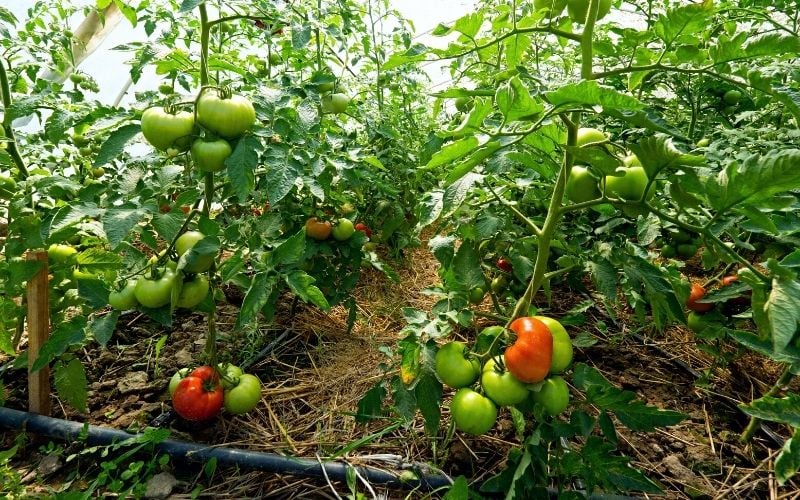
As fall approaches, many of us watch with trepidation as our vines are loaded with green tomatoes that are slowly ripening. Especially in northern climates, it is often difficult to squeeze a decent tomato harvest into the short season.
Even though your plants may look healthy, you might wonder, “Why aren’t my tomatoes turning red?”
In most cases, tomatoes are slow to ripen on the vine because they are overfed, overwatered, overgrown, or the weather is too cold (and in some cases, it can even be too hot!).
Thankfully there are many ways we can hasten the ripening process and get our tomato harvest off before the season ends.
Read on to understand what retards the tomatoes from turning red and learn what you can do about to ripen green tomatoes faster on the vine.
5 Reasons Why Your Tomatoes Are Not Ripening
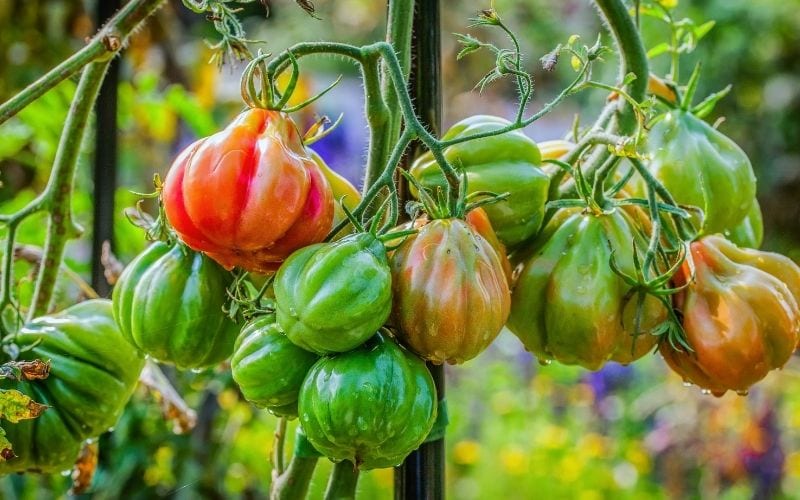
Most tomatoes will turn red 6 to 8 weeks after the flowers were pollinated. Sometimes the days go by, however, and the tomatoes are not ripening as they should.
Here are the most common causes of why tomatoes don’t ripen on the vine.
1: The Weather Issues
The weather is perhaps the biggest factor in whether your tomatoes will ripen quickly or not. A tomatoes ideal ripening temperature is between 20°C and 25°C (68°F to 77°F). When the temperature drops down to 10°C (50°F), ripening will slow and can stop altogether.
On the flip side, as temperatures soar over 30°C (85°F), the plant does not produce lycopene or carotene and the loss of these pigments inhibits fruit maturation.
Luckily, the tomatoes will start ripening again when the temperatures settle back into the ideal range.
2: You are Overfeeding
Tomatoes are a heavy feeder, and many gardeners provide a regular supply of fertilizer throughout the growing season. However, too much fertilizer can retard the fruit from ripening.
If you do fertilize your tomatoes, give the first application at transplant and then only feed your tomatoes once or twice more throughout the season.
3: Too Much Water Can Affect The Tomato’s Ripening
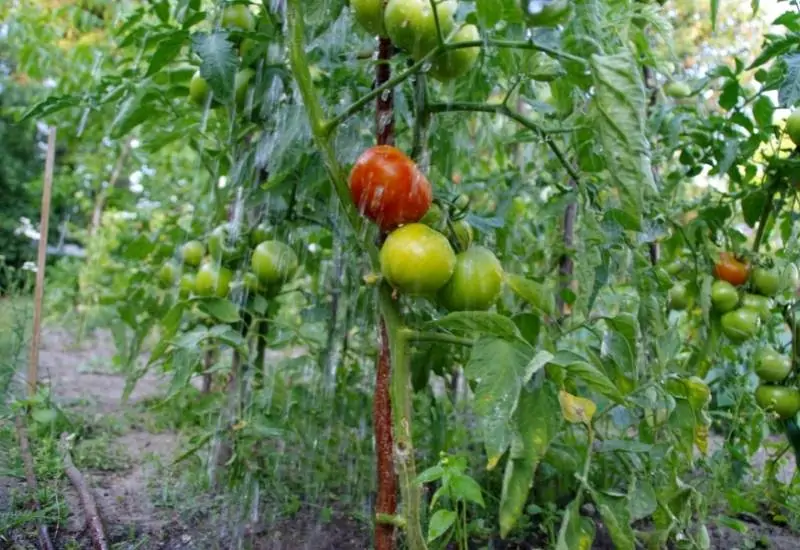
Tomatoes are a thirsty plant, and so it is easy to overwater them. However, this is not ideal for fruit maturation.
A continuous supply of water throughout its life will keep the plant thinking that it has lots of time left, whereas reducing or eliminating watering at the end of the season will remind the plant it is time to produce seed (i.e. ripe fruit).
4: Overgrown
Large, bushy tomato plants may look impressive but they are not ideal for ripening tomatoes. A voluminous plant will put all of its energy into its leaves, branches, and flowers and the fruits will be forgotten.
Keep your plants properly pruned throughout the season to manage growth and keep the plant maintained at a reasonable size.
5: Your Tomatoes Are Not Supposed to Be Red
First and foremost, it’s important to understand that different tomato varieties ripen at distinct rates. For instance, cherry tomatoes typically turn red faster than larger varieties like beefsteak tomatoes, primarily due to their size.
Moreover, a ripe tomato isn’t always red. Depending on the variety, tomatoes can turn yellow, orange, brown, purple, or even remain green, as seen with the Green Zebra. So, it’s essential to be familiar with your tomato type to judge its ripeness based on color. Another way to determine a tomato’s readiness is by its firmness. If it yields slightly to the touch, it’s likely ripe and ready to eat.
14 Tips To Get Tomatoes To Ripen Faster On The Vine
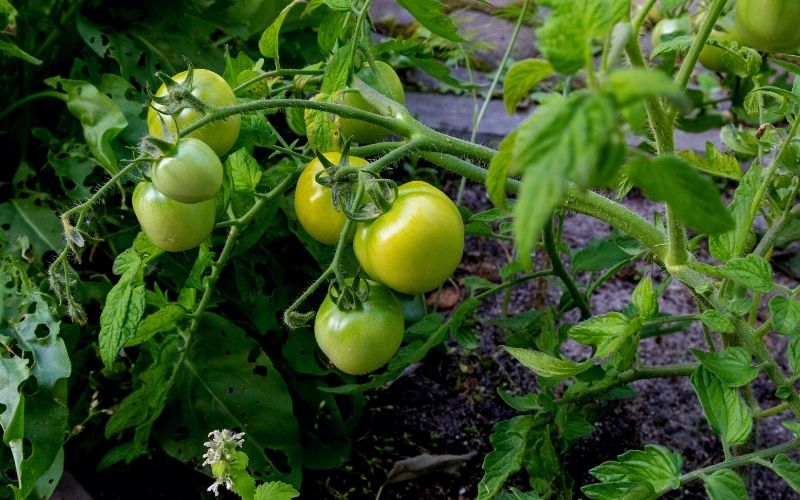
Do not lose hope as you watch your tomatoes linger as inedible green rocks. There is still hope for a bountiful harvest if you try one (or more) of these ways to get your mature green tomatoes to ripen faster on the vine.
1: Cage Your Tomatoes
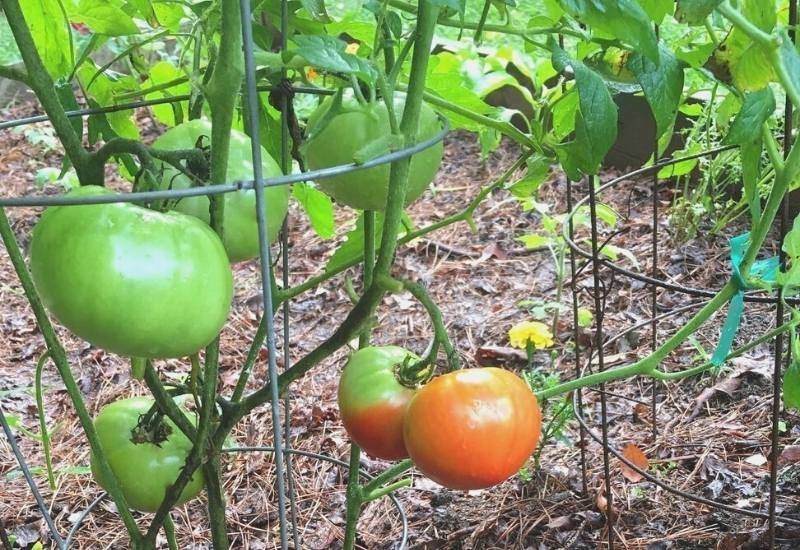
As your tomatoes grow, consider putting them inside a cage (even determinate varieties). This will help keep the plant upright and will maximize sun exposure. This is particularly beneficial in northern climates that get limited sun at the best of times.
2: Mulch With Plastic
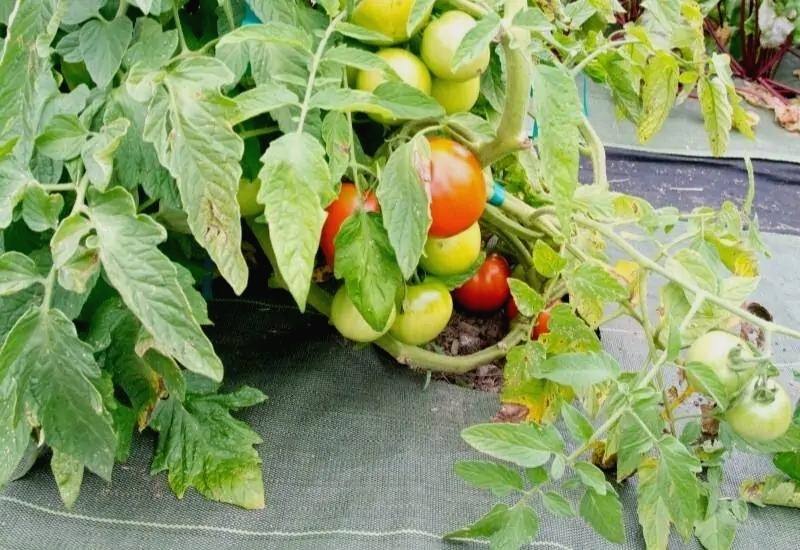
While all mulch is beneficial for plants, certain types can be used to stimulate the maturation of your tomatoes. Red plastic, silver tarps, or even aluminum foil will reflect light onto the tomatoes and stimulate carbohydrates and speed up the maturing process.
Put these mulches around the base of the plants or vertically on the north side of your tomatoes.
3: Pruning And Topping
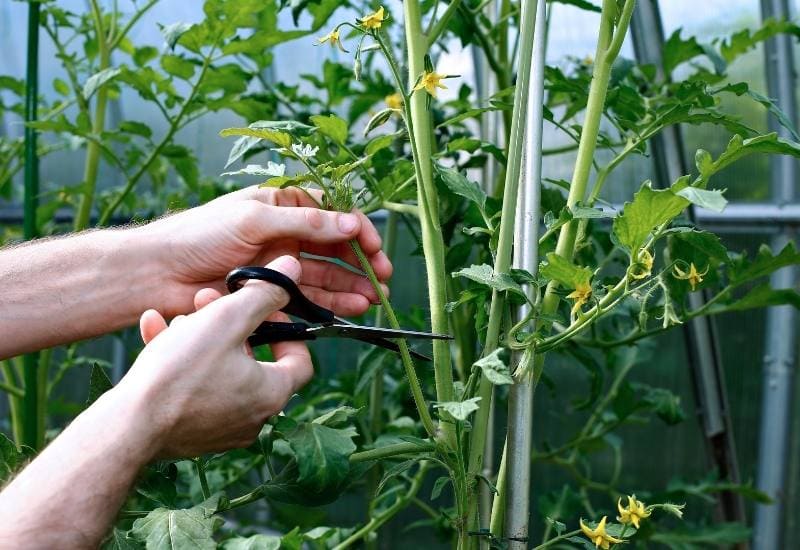
We have already discussed the benefits of pruning to keep your plant from becoming overgrown, but topping the plant and removing any new growth later in the season will allow the plant to put all of its energy into ripening the fruit.
4: Remove Late Flowers
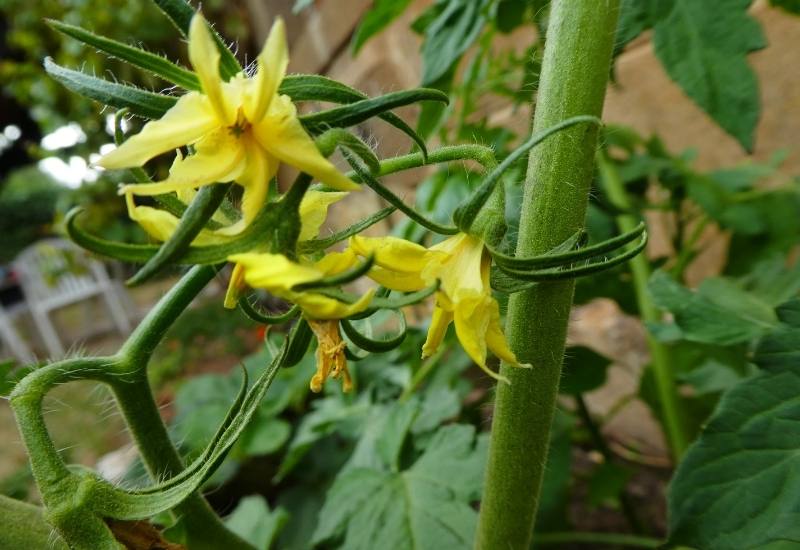
As late summer approaches, your tomato will continue to flower and produce more tomatoes.
However, not all of these late flowers will have time to fully develop, so instead of wasting energy on these fruitless endeavors, pick off any flowers that won’t have time to mature.
5: Remove Late Tomatoes
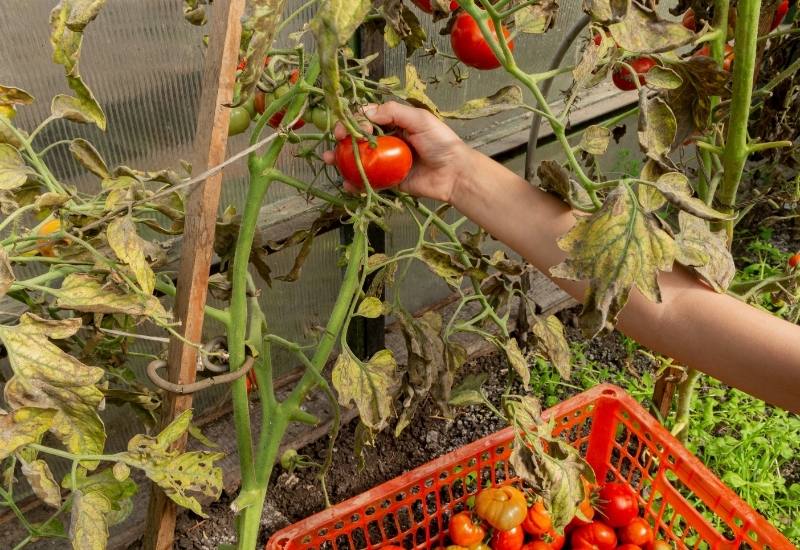
On a similar note, some tomatoes might be too slow and won’t have time to finish ripening before a killing frost arrives. Removing these immature tomatoes will help the other tomatoes on the plant ripen faster.
6: Pick Some Tomatoes Early
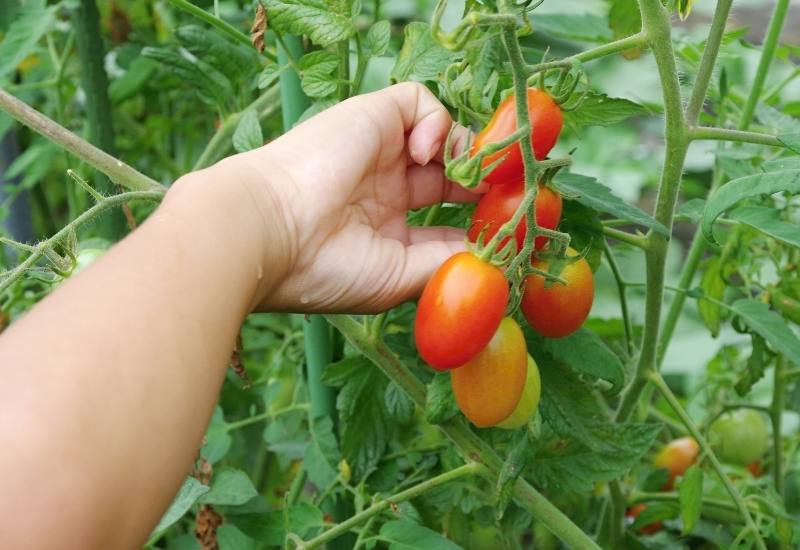
If you have loads of tomatoes that are mature but not yet ripe, consider picking some of these tomatoes green and ripen them indoors.
This will hasten the maturation of the ones left on the vine instead of potentially losing all of them if they don’t ripen in time.
7: Eliminate Suckers (Lateral Stems)
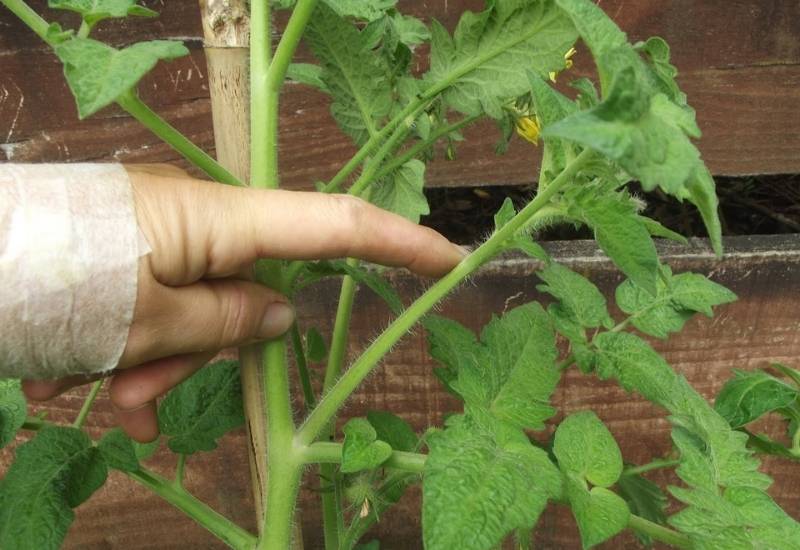
Tomato plants are notorious for sending out lateral stems (often erroneously called suckers), which don’t serve any real purpose and “suck” energy and nutrients from the rest of the plant.
Trim them off so the plant can put all of its energy into ripening the tomatoes.
8: Move Pots Indoors
If you grow your tomatoes in containers, consider moving them indoors as the weather cools. This is the easiest form of season extension and you don’t even have to go outside to pick them for supper.
9: Trim Off Leaves
De-leafing a tomato plant is not recommended, but trimming off extra leaves can open the plant up to let sunlight in and focus more energy on ripening the fruit.
10: Shift Roots
Though this might seem a little drastic, consider giving your tomato plant a little tug to disturb the roots slightly.
This tricks the plant into thinking its time is almost at an end and it will direct more nutrients and moisture to the tomatoes themselves.
11: Tuck Them In At Night
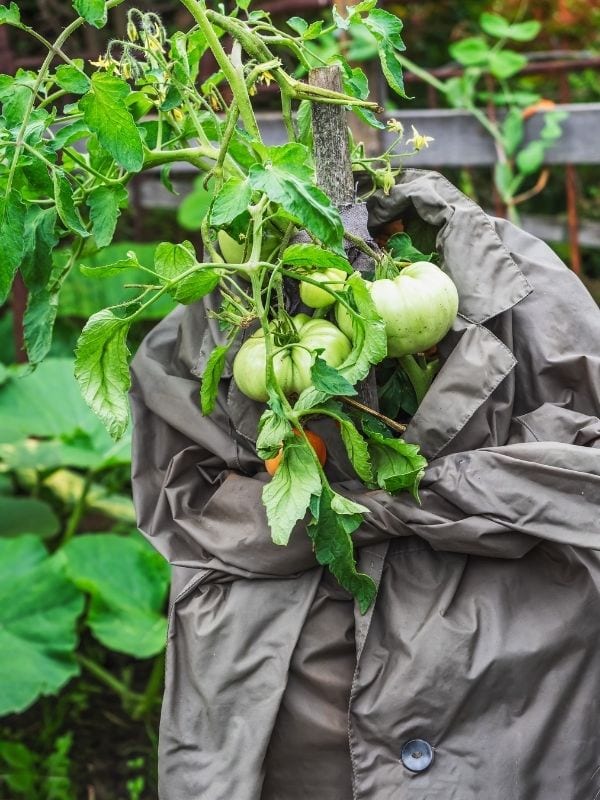
As the nights start getting cold, consider giving your tomatoes a nice warm blanket at night.
And, yes, you can actually use a quilt, but row covers, frost blankets, or any other cloth-like material will work well. You can also use bubble wrap or clear plastic sheeting.
Make sure you completely cover the plant as any exposed part can be frosted or chilled to the detriment of the entire plant.
If the material is lightweight, or if you are expecting wind, be sure to properly anchor them down.
Don’t forget to uncover your tomato plants every day. (We might want to stay in be all day, but your tomatoes don’t).
12: Shade Them During The Day
On the flip side, if your days are getting too hot consider given them some shade.
Floating row covers, shade cloth, or even an umbrella will ward off the worst of the sun’s glare and keep your tomatoes from getting too hot.
13: Stop Fertilizing
Be sure to stop fertilizing your tomato plants as soon as they have a decent crop of little fruits. Fertilizing past this point will cause the plants to grow at the expense of fruits.
This is especially true of fertilizers high in nitrogen, so make sure to get a fertilizer specially formulated for tomatoes or one with a low N number.
14: Stop Watering
As the end of July rolls around, stop watering your tomatoes (though of course, dry years might require a less drastic approach).
Allowing the tomato plant to become slightly stressed so that its leaves will even start to wilt will actually speed up the ripening process.
Conclusion
We have all had those years when our plants grew beautifully, but they didn’t produce anything edible at the end of the season. A home-grown tomato is so delicious that it is an immense shame when our tomatoes don’t ripen in time.
Hopefully, you will be able to use a few of these techniques and make the most of your bountiful harvest.

Written By
Amber Noyes
Amber Noyes was born and raised in a suburban California town, San Mateo. She holds a master’s degree in horticulture from the University of California as well as a BS in Biology from the University of San Francisco. With experience working on an organic farm, water conservation research, farmers’ markets, and plant nursery, she understands what makes plants thrive and how we can better understand the connection between microclimate and plant health. When she’s not on the land, Amber loves informing people of new ideas/things related to gardening, especially organic gardening, houseplants, and growing plants in a small space.
